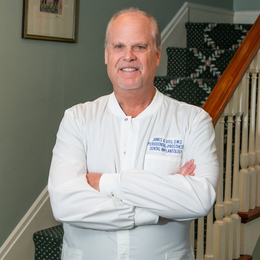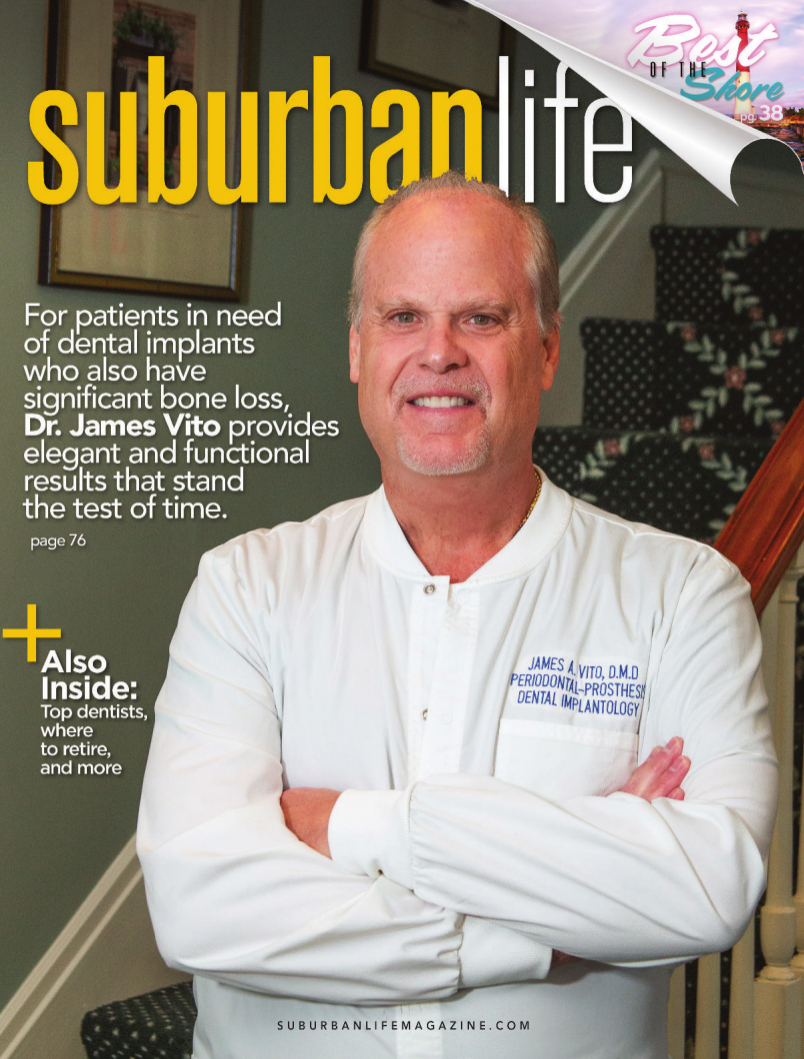
No Bones About It
Are you considering dental implants to replace missing teeth but have significant bone loss? Knowing the facts can help you obtain an elegant and functional result that stands the test of time.
We see more and more advertisements about dental implants, the benefits of dental implants, and the remarkable transformations where someone can get new teeth in as little as a day.
The goal of implant dentistry is to restore the normal contour, function, comfort, speech, and health, regardless of bone loss. To satisfy these goals of implant dentistry, both the hard (bone) and soft (gum) tissue need to be present in ideal volumes and quality. Following tooth loss, the bone is affected most often and bone augmentation (grafting) is usually indicated to achieve ideal volumes and quality.
Dental implants come in a variety of widths and lengths to fit any situation. While we have this diverse assortment of lengths and sizes, this does not mean we find an implant to fit the bone we are presented with. Rather, the bone needs to fit the environment that we are working with, which includes the type of restoration we are planning, as well as the bite forces the patient presents with, which then ultimately determines the dental implant length, width, and number.
So, what is the ideal length and width of a dental implant that will survive the test of time? With respect to width of dental implants, we try to mimic the natural tooth root. When comparing implant diameter to natural tooth roots, 3- to 3.5-mm-diameter implants may be used in the mandibular incisor (lower front teeth) regions and in the area of the maxillary lateral incisors; 4-mm-diameter implants may be used in the areas of the maxillary anterior teeth and premolars of both arches, and the mandibular canines; and 5- or 6-mm-diameter implants may be used in the molar areas of both arches.
The greater the bite force, the longer the implant dimension. Many studies suggested that increasing implant length plays an important role in decreasing the bone stress and increasing implant stability in poor-quality bone. For a dental implant to succeed, it should be a minimum of 10 mm in the mandible where the bone is denser, and between 10 and 12 mm in the maxilla where the bone is softer. In summary, for the posterior region of the mouth in both the upper and lower jaws, dental implants need to be 4 to 6 mm in diameter and 10 to 12 mm long.
So, what are the options for patients who want dental implants but have experienced severe bone loss either through dental decay, gum disease, or trauma, and cannot have dental implants because there is not enough bone or the implants will be too short to guarantee long-term success of both the implants and the restoration?
When the bone volume is not sufficient for short implant placement, vertical bone augmentation needs to be considered as a serious treatment option. The options currently are taking bone block grafts from specific areas of the jaw when you need a small amount of bone, or from the hip when a more significant amount of bone is needed. Both of these procedures involve a second surgical site, which carries with it healing and morbidity issues.
A third option is to use a customized Allograft Bone Graft, which is a transplant of an organ, tissue, or cells from one individual to another individual of the same species who is not an identical twin.
With the modern CAD/CAM technology we have today, it is possible based on a cone beam computed tomography (CBCT) or 3D scan to design and create a patient-specific bone graft to rebuild the lost volume of hard tissue. This constructed graft then fits intimately onto the defect, like a puzzle piece. The block is then held in place with bone screws and allowed to heal for six months.
This virtual planning of the bone block requires advanced knowledge of the patient’s anatomy, as well as the size and number of the dental implants and the restoration being considered.
The Puros® Allograft Customized Bone Blocks (ACBB) have been available since 2014. It is prepared based on the multistep Tutoplast® tissue-sterilization process, which was developed in 1969. After purification of the donor (cadaver) material, this block is then custom milled for the patient’s specific defect based upon the dentist’s directions in a clean environment. The block is then packaged and sterilized with low-dose gamma irradiation and returned to the dentist’s office, where the patient is then scheduled for the placement of their customized bone graft.
As with any other block graft procedure harvested either from the jaw or hip, the healing period is six months before dental implants can be placed. The main advantage of this customized bone graft is that there is no second surgical site.
Having the correct bone foundation provides for a more predictable and appropriate dental implant selection and placement, and allows for a more ideal dental restoration. While bone grafts may add some extra time to your dental implant journey, dental implant therapy is not about expediency but about doing it correctly and predictably to provide a patient with a long-term result.
If you are considering dental implants for multiple missing teeth and there is significant bone loss, or if you are not sure what option is best for you, please feel free to call us and schedule a consultation to explore all of your options for a long-term successful outcome.
Dr. James Vito is a periodontist, a prosthodontist, and a dual-board-certified dental implant specialist who has been in practice since 1987. He has been in the Wayne area since 2000. For more information, visit www.jamesvito.com or call (610) 971-2590. Dr. Vito’s office is located at 523 East Lancaster Avenue in Wayne.
Photo by Alison Dunlap
Published (and copyrighted) in Suburban Life magazine, June 2023.



